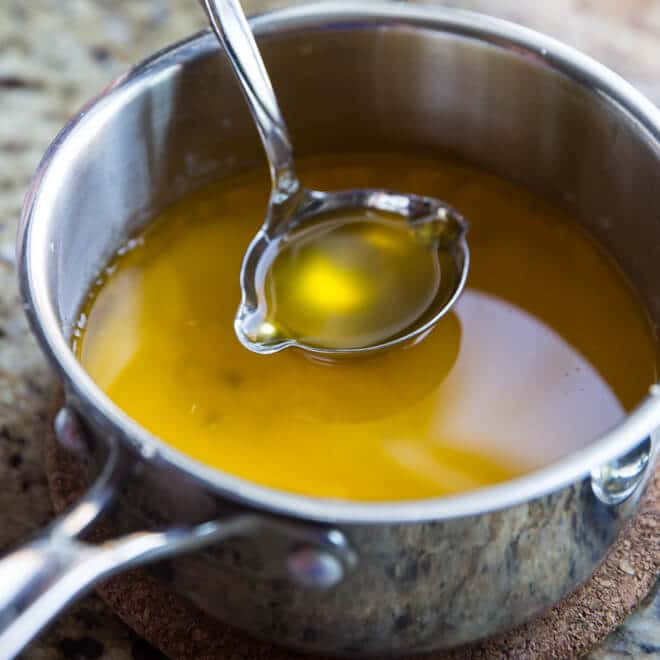Using Clarified Butter Can Take Our Cook’n to New Heights!

Now I know I’m addressing some pretty savvy and accomplished cooks and bakers out there, but just in case there are a few like me, I’m going to ask: Have you ever wondered what clarified butter is? Every once in a while you’ll run onto a recipe that calls for clarifying butter, and it’s good to know what it is and how to make it.
Clarified butter is also called drawn butter or ghee. It’s unsalted butter that has the milk solids and water removed so all that remains is pure liquid golden-yellow butterfat. And it has some specific uses. For instance, here’s what the folks at Land ‘O Lakes Butter says you can do with it:
- dip cooked seafood, such as crab or shrimp
- sauté fish
- cook vegetables
- make hollandaise or other sauces
- make buttercream frosting
- coat your popcorn
Heat 1/2 pound (two sticks) of unsalted butter in a small, heavy saucepan over low heat. As the butter slowly melts, it will separate into a small amount of milky liquid at the bottom of the pan, a large quantity of clear liquid, and a bit of foamy white residue floating on the top. All you want is the clear liquid, which is the clarified butter.
Spoon off the residue from the top and discard it. Without disturbing the white liquid (the milk solids) on the bottom, spoon or pour the clear liquid into another container. If you have time, you can refrigerate the melted butter until the clarified part is solid. The milk solids, contrary to their name, will remain liquid. Pry the solid clarified butter off and pour away the milky part (or save it for use in your next bread-making event).
It really is worth the effort to clarify your butter for sauteing—you’ll have a much easier time cooking your foods without the risk of burning them. And because it contains no milk solids, clarified butter will last even longer than regular butter if stored airtight in the refrigerator.
There’s another benefit to clarified butter: it hasn’t any lactose, so those with this sensitivity should be able to enjoy clarified butter without the uncomfortable effects those who are lactose intolerant are well aware of.
Those of you that are old-hands at cooking with clarified butter, please share your tips or recipes. This is definitely a skill that can take our cook’n to new heights!
Sources:
www.delish.com
www.bakefromscratch.com
www.ediblesiliconvalley.ediblecommunities.com
www.natashaskitchen.com
www.finecooking.com
www.thewholesomedish.com
 Alice Osborne
Alice Osborne
Weekly Newsletter Contributor since 2006
Email the author! alice@dvo.com
